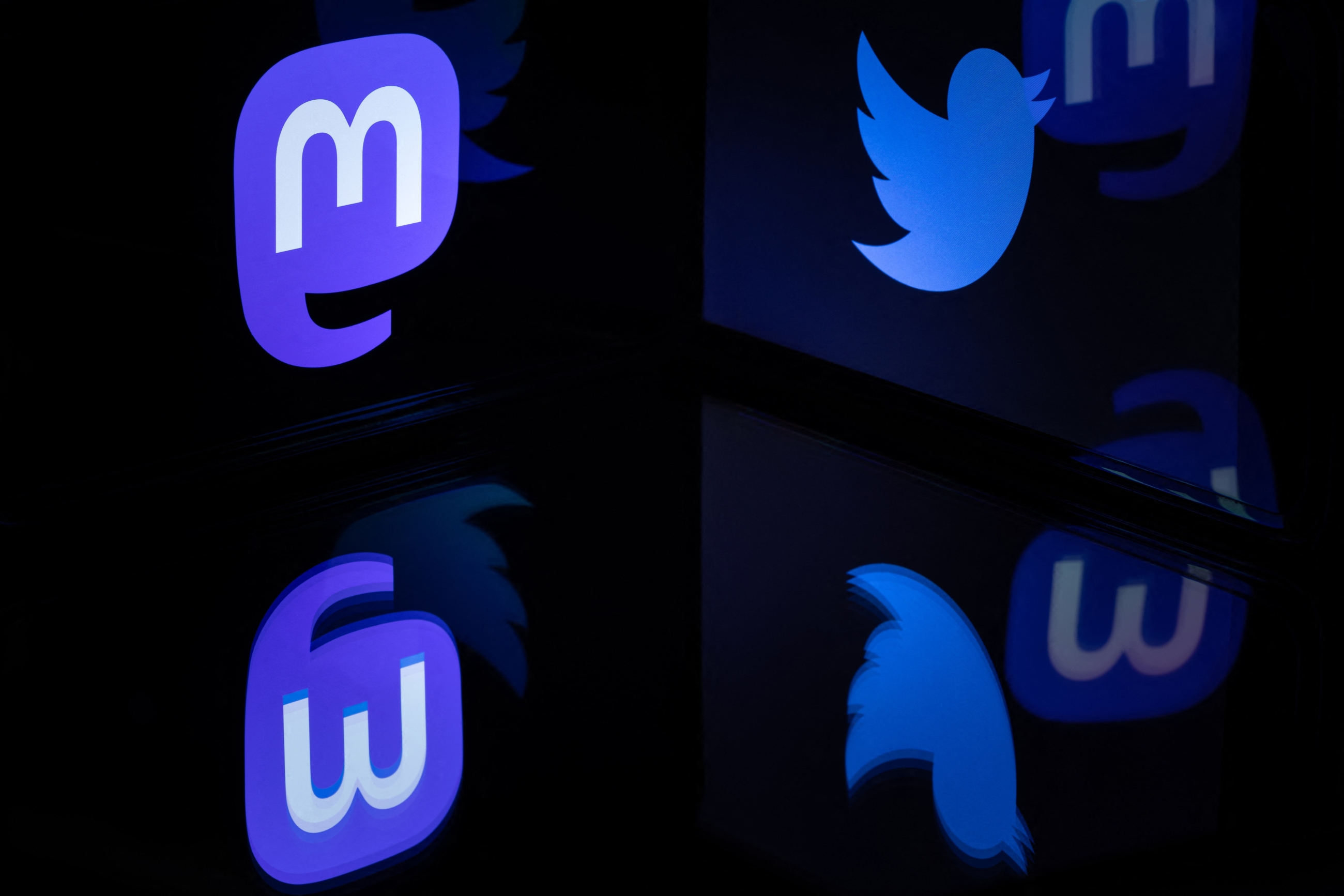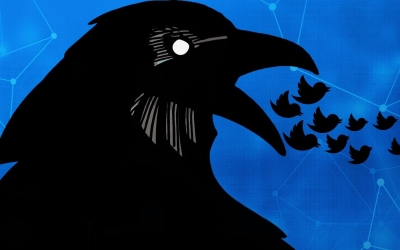Mastodon: Everything you need to know about the new 'alternative' to Twitter

Twitter has undeniably been a tool that has helped movements in the Arab world. From dissidents to journalists and activists, the social media platform has served as a conduit for free speech in places where opinions and facts have been restricted by authoritarian rule.
"The civic space is almost fully closed and people go to the online civil space," says Mohamad Najem, executive director of Social Media Exchange (Smex), a Beirut-based nonprofit defending and advocating for digital rights in the region.
But now, following Elon Musk's Twitter takeover and the axing of many of its employees and departments, the platform's future is uncertain.
This could mean good news for activists and dissidents, who can coordinate movements without being exposed to trolls or bad actors
Enter: Mastodon.
While the app is presented as an alternative to Twitter, it is one that works on an entirely different premise, one that could be key to the continuation of social movements that Twitter previously facilitated.
New MEE newsletter: Jerusalem Dispatch
Sign up to get the latest insights and analysis on Israel-Palestine, alongside Turkey Unpacked and other MEE newsletters
In 2016, when Mastodon was launched, it was intended to give space to marginalised people who wanted to escape Twitter’s toxic environment. It is not a straightforward app, and it can give headaches to people accustomed to Twitter’s polished user experience.
Middle East Eye has compiled a guide for dissidents and journalists in the Middle East and North Africa who are considering migrating to Mastodon.
The basics
While many have chosen Mastodon as an alternative to Twitter, the app is completely different in its nature and functioning.
For starters, Mastodon is not a company. It is an open-source app, run by volunteers. This means that while the "bird app" has a business model that focuses on ad-generated revenue through engagement - facilitated by algorithms - Mastodon doesn’t have a business model.
It is centred around feeds called “instances”, created by users sharing similar interests, without ads, tracking or monetisation of any kind. The "Fediverse", as the network is known, is focused on small communities and individual exchanges, and not on hot takes that deliver dopamine-inducing content that keep you engaged for longer. At least for now.
Mastodon is built around ActivityPub, a social networking protocol known as Fediverse. What this means is that the Fediverse is an umbrella code under which several apps like Mastodon exist. This allows these apps to be used interchangeably.
In an analogy with more popular social media platforms, this means that if apps like YouTube, Facebook, Instagram or Twitter would function under the Fediverse, users would be able to use their Facebook account to follow a YouTube user, or tweet from their Instagram account.
Essentially, apps in the Fediverse operate under the same digital infrastructure. The apps under Fediverse are used for social networking, microblogging or websites, and include Pixelfed, PeerTube, OwnCast, Gnu Social or Friendica.
Joining Mastodon
Mastodon is a microblogging app in the Fediverse, so it can be a platform where journalists and dissidents in the region can engage in conversations. To join Mastodon means you need to choose an “instance”, which is basically a server where communities "toot" - as opposed to tweet - to each other. Instances can be public or private and are run independently by their creators, who tweak them to run according to their needs.
To join a private instance, you need approval from its creator or administrator. That is why it can take anywhere from minutes to days to join an instance, depending on how many people wish to join it. This was intended to allow administrators to be able to sift through bad actors and unwanted users joining instances.
A dissident from Saudi Arabia, wanting to discuss human rights issues or form a movement around a cause, could join an instance together with people who share the same interests. But one should be careful when joining an instance, as its administrators have full access to everything that happens within it. This includes any direct messages (DMs) someone sends or receives within the instance. The admin also has full control to block or kick out anyone from the instance. Joining an instance means trusting the people within it, especially its creators.
What this means in practice is that if people join instances which are under surveillance by state authorities, they could be joining a tight-knit instance with members who could jeopardise their safety.
Usually, joining a public instance first is the way to go. Then, you can find more private ones populated by activists, dissidents or journalists you share interests with and, most importantly, trust. You can use specific tools to help you narrow down your choices in terms of instances you can join. If you want to change instances, you can take your followers and follows with you to another one.
After joining Mastodon through an instance of your choice, you need to set up your profile. As with Twitter, some users choose not to use their names. This will likely come as good news to the many activists and dissidents in the Middle East and North Africa who would face consequences for openly criticising authorities.
Verification, which has also been important for activists, dissidents and especially journalists, is also possible on Mastodon, even though it works in a completely different way to Twitter. To get the coveted tick, you need to edit your profile, scroll down to the verification section and copy the rel="me" code. After that, you paste your verification code into your website, which will ensure that the same person on your Mastodon account also controls your profile.
Using it
After you’re all set up and join an instance, there are a few things to keep in mind. No algorithm is pushing things you might like, or suggesting instances, or people to follow. Everything you see is dictated by the people you choose to follow.
You can reply to posts, boost them (which is similar to retweeting), or you can like and save posts. Liking doesn’t boost the post; it just lets the user who tooted it know you appreciate it. You can only search for hashtags and not text, so unless you hashtag your post, it is quite hard to be found by others, unless you share a similar instance with them. There’s an explore section that lets you find popular posts and news, but many servers opt out of this. The local tab shows you the posts within your server, while the federated one shows you every post in the Fediverse.
Consenting to sharing your information to your server, the whole Fediverse or just through a hashtag is the core design feature of the app, which gives users a lot of control over who they interact with. The downside is that it’s harder to explore new circles and ideas. It’s rather more focused on sharing ideas within circles, and you decide how open they are to others. So, within your own closed-off server, instance or community, sharing is easier, but more limited outside of it.
Mastodon has a content warning system which lets users choose whether to obscure photos or videos they share, if they think they might have a negative impact on other users. Instances can make conversation between people more focused, as opposed to the very public nature of Twitter. This could mean good news for activists and dissidents, who can coordinate movements without being exposed to trolls or bad actors, to whom they can deny access.
Now, servers are very busy with new applications, and the fact that Mastodon is run entirely by volunteers will make the experience different to social media platforms that have billions of dollars and thousands of employees.
“If people do go to Mastodon and Twitter disappears, I think Mastodon eventually will become far more functional than it is,” Marc Owen Jones, assistant professor at Hamad Bin Khalifa University in Qatar, who researches disinformation and digital media, told MEE.
“I already tried it a bit, and it is a bit cumbersome. But it does provide a lot of the same functionalities. The influx of new users will generate the requisite pressure to actually improve the platform,” added the professor, author of Digital Authoritarianism in the Middle East.
Mastodon is not a product and you’re not a consumer. It is a place where communities grow and for political and social movements to form in safe spaces. This focus on communities makes the platform healthier and safer, as long as the instances one chooses to join are vetted.
In theory everyone who joins, or is allowed to join, has a vested interest in helping the communities in the instances grow in a healthy, organic way. But we all know that issues may begin to appear soon, as users migrate en masse.
"It's a totally different animal than Twitter," said Najem, director at Smex. "It needs more investigation and more visibility. I don't think it's ready for all this mass migration of people leaving Twitter."
Dania Akkad contributed to this report.
Middle East Eye delivers independent and unrivalled coverage and analysis of the Middle East, North Africa and beyond. To learn more about republishing this content and the associated fees, please fill out this form. More about MEE can be found here.







